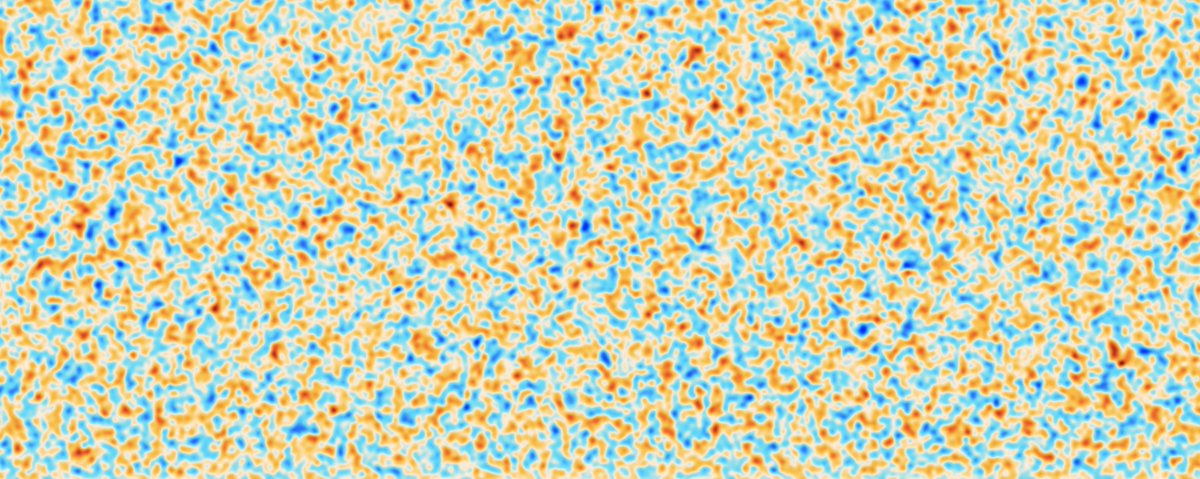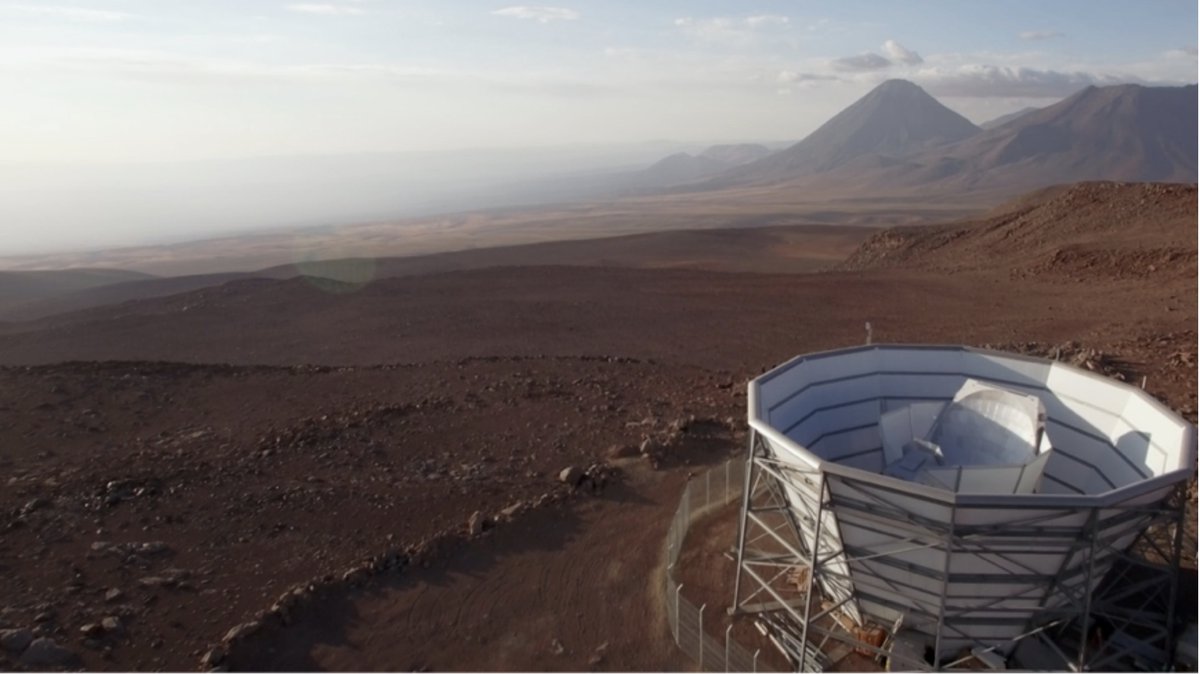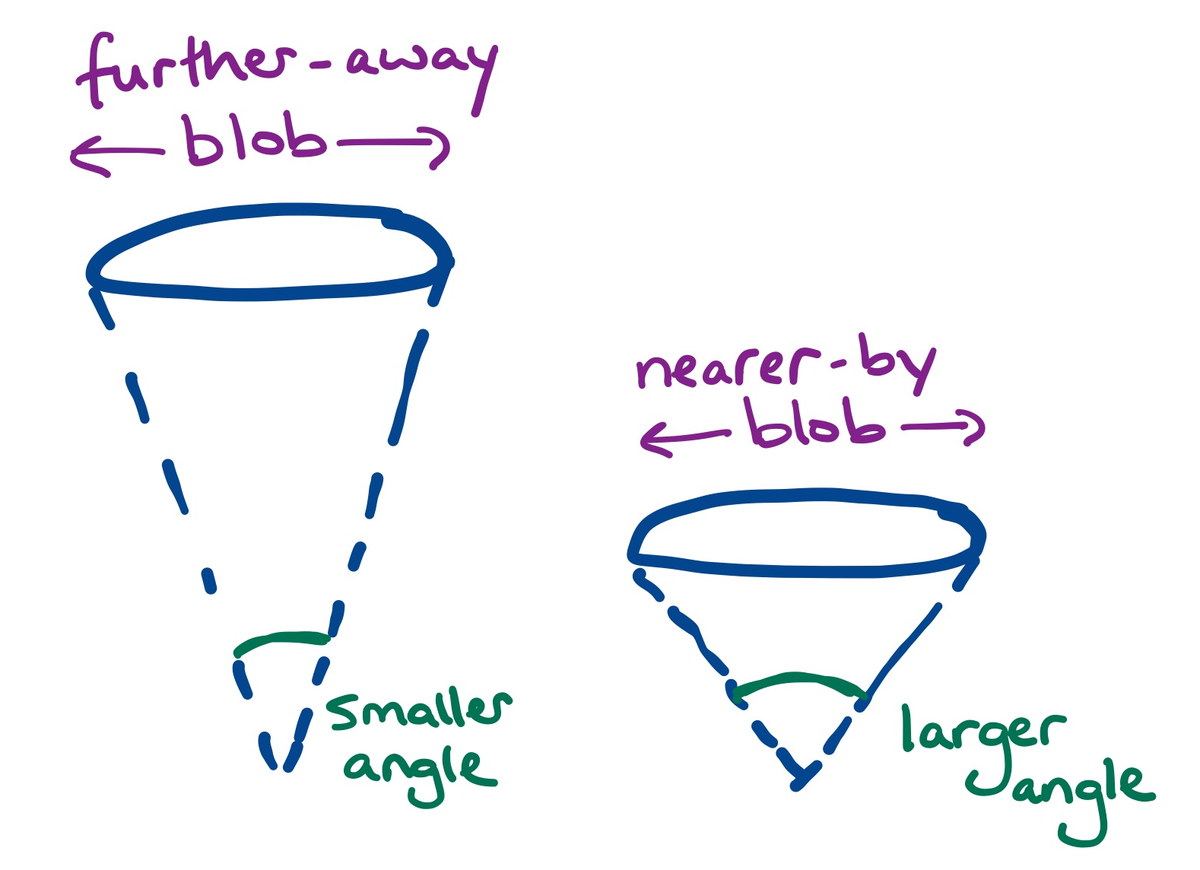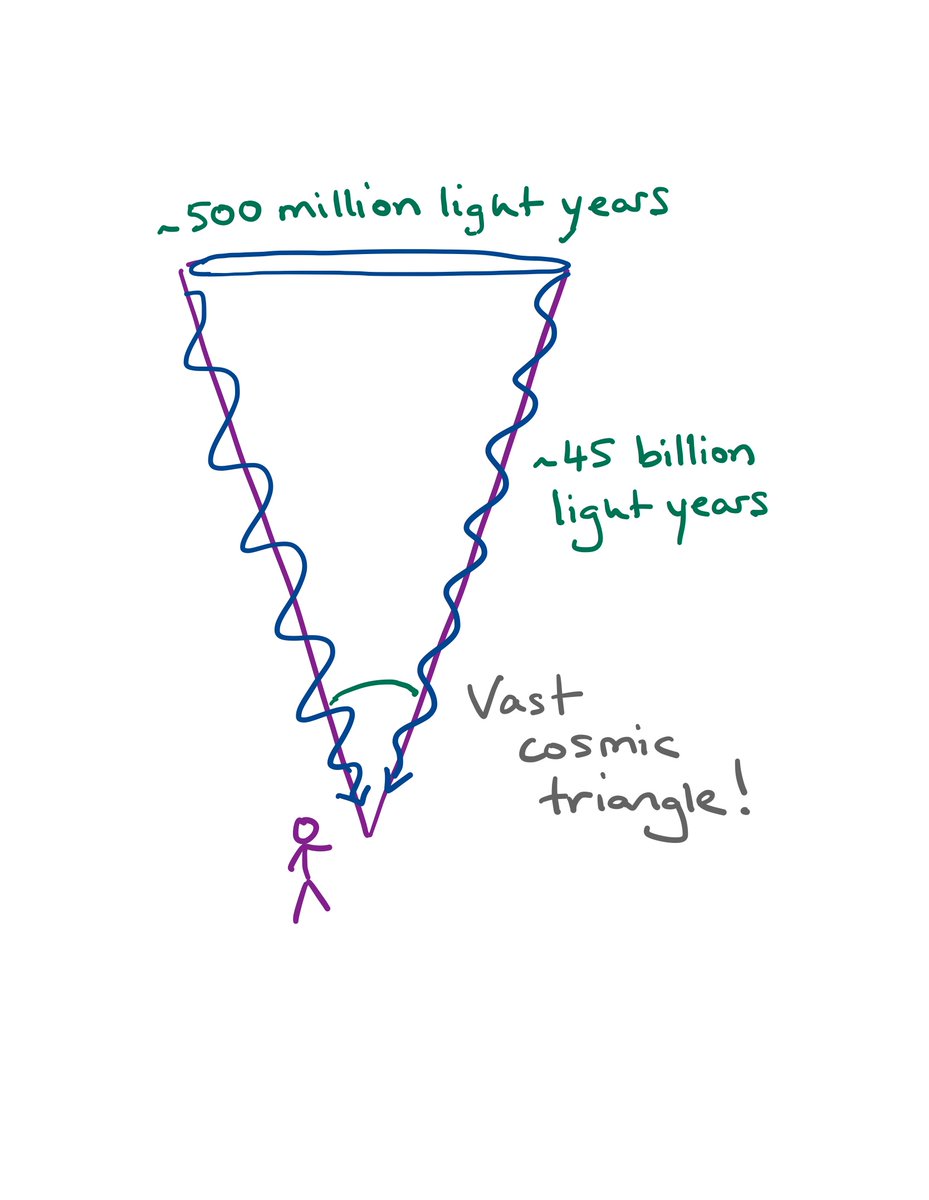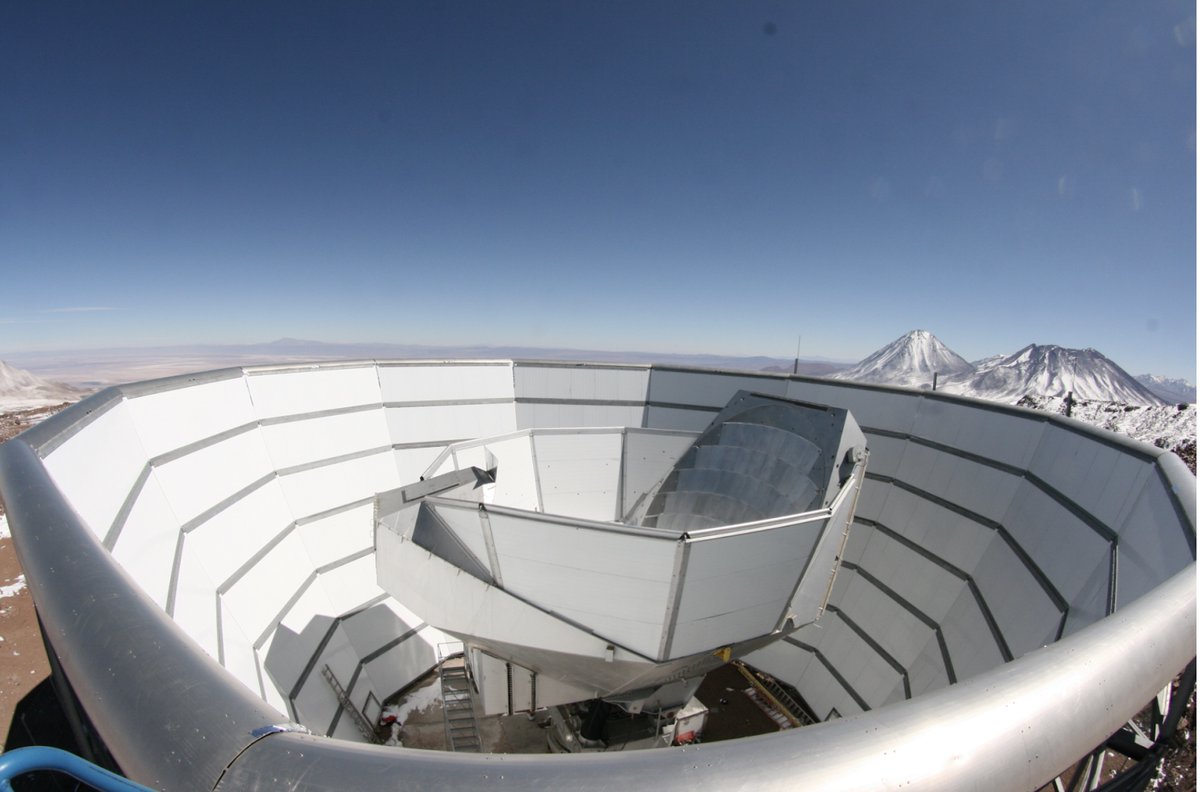A bit more about our new cosmology results from @ACT_Pol and what it tells us about the universe (or, why are we all so excited about it)… 1/n #NSFFunded
This image from @ACT_Pol is a snapshot of the universe when it was 380,000 years old. Fifty times the Moon’s width, it shows an enormous swathe of space 20 billion light years across (though with space growing, the span was ‘only’ 20 million light years when the light set off).
It& #39;s the farthest back we can see -the light has traveled billions of years to reach us. In earlier images we looked at the light& #39;s intensity. Now we better see polarization, tracking cosmic motion as particles began a millions-of-years journey to become the first tiny galaxies.
The colour-scale is pretty insane – the variation we measure is just tens of millionths of a degree. Huge kudos to talented colleagues who built the incredibly sensitive @ACT_Pol instrument and telescope (and thanks again @NSF).
And here’s @ACT_Pol on its beautiful mountaintop in Chile, high in the Atacama Desert (credit - Debra Kellner). It picks up millimeter-wavelength light, longer waves than our eyes can see, so has an aluminium dish instead of a usual mirror.
The cool thing is we& #39;ve used this new image from @ACT_Pol (and more sky not shown) to measure how fast the universe is growing and how old it is. It uses an absolutely enormous triangle. The ‘blobs’ in the image are typically separated by a few hundred million light years...
The scale of these blobs acts like a cosmic ruler held out at a very-long arm’s length. By seeing what angle they appear on the sky (here it’s around half a degree, similar to the Moon), we can work out how far away they are. If they were closer, they would appear bigger.
We’ve measured the angle with high precision with @ACT_Pol, and that tells us the image is reaching us from a whopping distance of 45 billion light years away. (it& #39;s ok that this is larger than the distance light could travel since the universe began – space is growing too).
We can turn that into a time since the light set off – and find 13.8 billion years from @ACT_Pol, give or take 40 million years (reported in new Aiola et al paper). This matches really well with what the @Planck satellite found (Planck saw more of the sky but at lower fidelity).
It also tells us how fast space is growing.The less time since the light set off (i.e. the younger the universe), the faster space must have grown to reach its current size. @ACT_Pol finds that galaxies separated by just over 3 million light years are moving apart at 68 km/s.
We’ve been wondering about that number (known as the Hubble constant), since astronomers looking directly at galaxies moving away from the Milky Way found a faster rate of 74 km/s (others found 70 km/s). Our new number matches @Planck’s.
That difference is small but still potentially interesting – in case the model for the universe needs tweaking. But we’ve not found signs in our @ACT_Pol data that the model is wrong. Luckily we’re still collecting new data to look even closer! #NSFFunded

 Read on Twitter
Read on Twitter